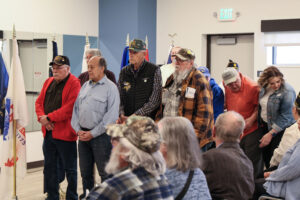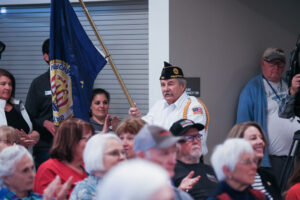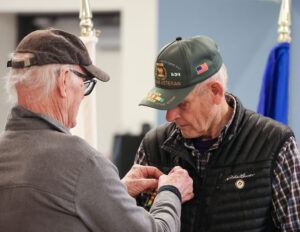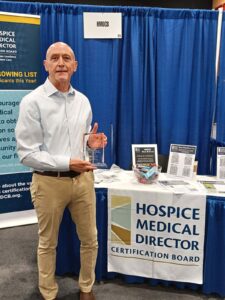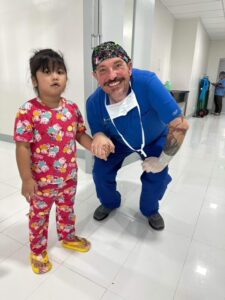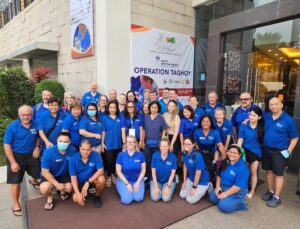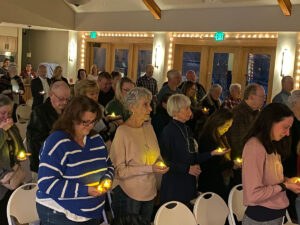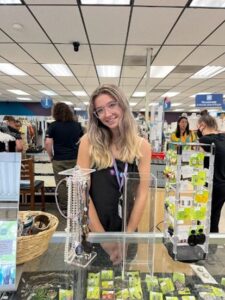On Friday, March 29th, gratitude and recognition filled the air at Carbon Valley Community Center in Firestone, Colorado as we honored those who served in the Vietnam War, yet whose sacrifice often went unrecognized upon their return home.
“As time goes on you want to realize that your sacrifice meant something to somebody,” said Dave Appel, who served in the Marines in Vietnam.
Thanks to the efforts of TRU Community Care, Carbon Valley Community Center, and American Legion Post 1985, along with the community’s support, Friday’s Welcome Home Vietnam Veterans Day event was a resounding success.
The event, which TRU has organized for three years, coincides with Colorado’s establishment of March 30th as Welcome Home Vietnam Veterans Day, a day designed to pay tribute to the service and sacrifice of Vietnam veterans. “Our community failed them almost 50 years ago when they came home, and we are striving to rectify that,” said Becki Parr, TRU Volunteer Coordinator and a key organizer of this event.
A highlight of the day was the Healing Warriors Pop-up, which offered veterans of all eras and their partners the chance to receive acupuncture, craniosacral, and healing touch therapy at no cost. The Healing Warriors Program aims to provide integrative, non-narcotic treatments for a range of issues including PTSD, TBI, chronic pain, and more.
The day culminated with a Welcome Home Vietnam Veterans commemoration that included a presentation and posting of the colors by American Legion Post 1985’s Color Guard, a presentation of handmade quilts by members of Quilts of Valor, and a moving pinning ceremony in which the Vietnam veterans present were individually welcomed home by the community.
Firestone Mayor Drew Peterson was in attendance to offer a heartfelt ‘thank you’ to the veterans for their service and sacrifice, closing out a day of recognition and appreciation that was long overdue.
